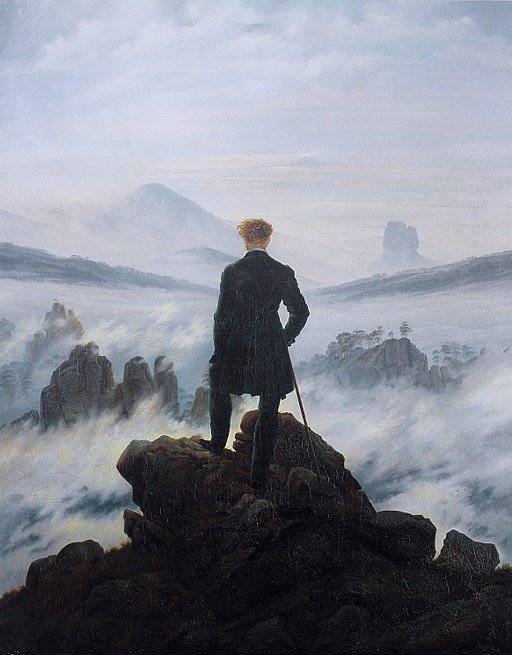Some say that paintings manifest the mind and thought of the artist. However, they can also tell us the story of the society at that time. If we analyze and interpret the artwork, then we might gain incredible knowledge apart from what we can learn from other media. Even the artists themselves are interesting in their own way. In this post, I would like to introduce you to the masterpiece of the Romanticism art – “Wanderer above the Sea of Fog” or “Der Wanderer über dem Nebelmee."

First, I want to give you some basic information about this spectacular painting. Wanderer above the Sea of Fog is a landscape painting admired as the best romanticism art painting. It is the oil painting drawn on a canvas with a dimension of 94.8 cm × 74.8 cm in 1818. Nowadays, Wanderer above the Sea of Fog is located at Hamburger Kunsthalle in Hamburg, Germany, waiting for the admirers around the world to visit.
I believe that many of my readers may want me to clarify more about a term mentioned above – Romanticism. In terms of art, romanticism is not only a love story; it is also one of the art period. Romanticism art represents an extreme emotion and feeling. It can bring the viewer deep down to the sorrow or fly the viewer up high to the happiest feeling. Nature is a significant component in Romanticism art, such as waves in the ocean, or leaves in the forest. This style is different from the past era in which artists tended to draw about history or a portrait of the real scene.
Let us take a closer look at what we can see from this painting. In the foreground, viewers see a man standing with his back to the viewers on a cliff. The wanderer looks over a landscape covered with a sea of fog, holding a walking stick in his right hand. In the middle ground, the other faraway ridge and forest jut out and can be seen from the frog. In the background, faded mountains rise in the left and fall to the plain in the right. The scenery was painted in bright colors. However, the wanderer and the cliff were painted in dark tones with the light beneath.
To explore more about this painting, I want to introduce you to Caspar David Friedrich – the most famous Romanticism artist. Wanderer above the Sea of Fog was painted by Caspar David Friedrich, a German artist, in 1818. Friedrich is best known for allegorical landscapes. With his painting’s strong and emotional focus on nature, he transformed the face of landscape paintings. His paintings have a particular characteristic that is outstanding solitude. Even though he sometimes painted humans, he minimized human’s size and surrounded by a beautiful landscape for the viewer’s gaze towards their metaphysical dimension.
In this painting, Friedrich not only illustrated the original view but added his soul with nature observation to make the view being one of the stories. The wanderer, with his back toward the viewers, makes it mysterious for the viewers to understand his facial emotion. The man might wonder about the endless myth in nature or look toward an invisible future. Standing in front of nature, the viewers can feel his loneliness and high respect toward nature with full confidence. The vital characteristic of Romanticism art is expressing the artist’s feeling, like what Friedrich said that “the artist’s feeling is his law.” Friedrich lets the viewers appreciate the view through his eyes and feel what he feels.
The uniqueness of Frederich is that he usually made political statements in his art pieces. Wanderer above the sea of fog can explicate European society at that time: the time of political and economic change and the rise of democracy. The outfit that the figure wears was worn by students and others during the Wars of Liberation in Germany; the costume was banned by the new ruling government of Germany at the time of this painting. He made a stance against the current government by intentionally portraying the figure in this outfit. However, the political implication in this painting did not stop there; the Nazi regime embraced and exploited his work (especially this painting) as symbols of extreme German nationalism. Since Friedrich illustrates mere symbolic imagery, not the literal illustration, his paintings were easily reinterpreted to suit new political intent.
If you love my tour, please stay tuned for the soon coming tour to another Romanticism art: "The Hay Wain" by John Constable.
เข้าสู่ระบบเพื่อแสดงความคิดเห็น
Log in